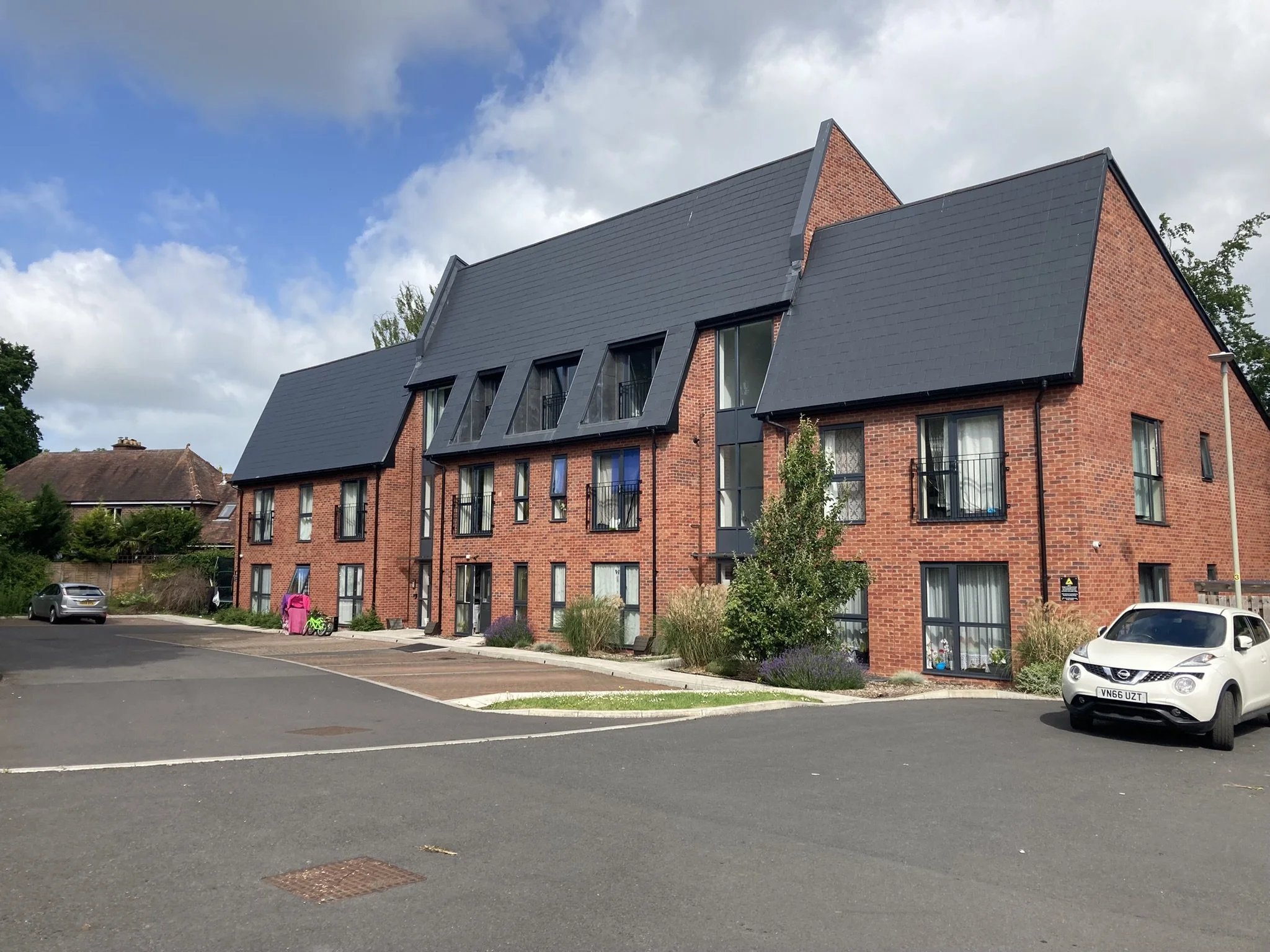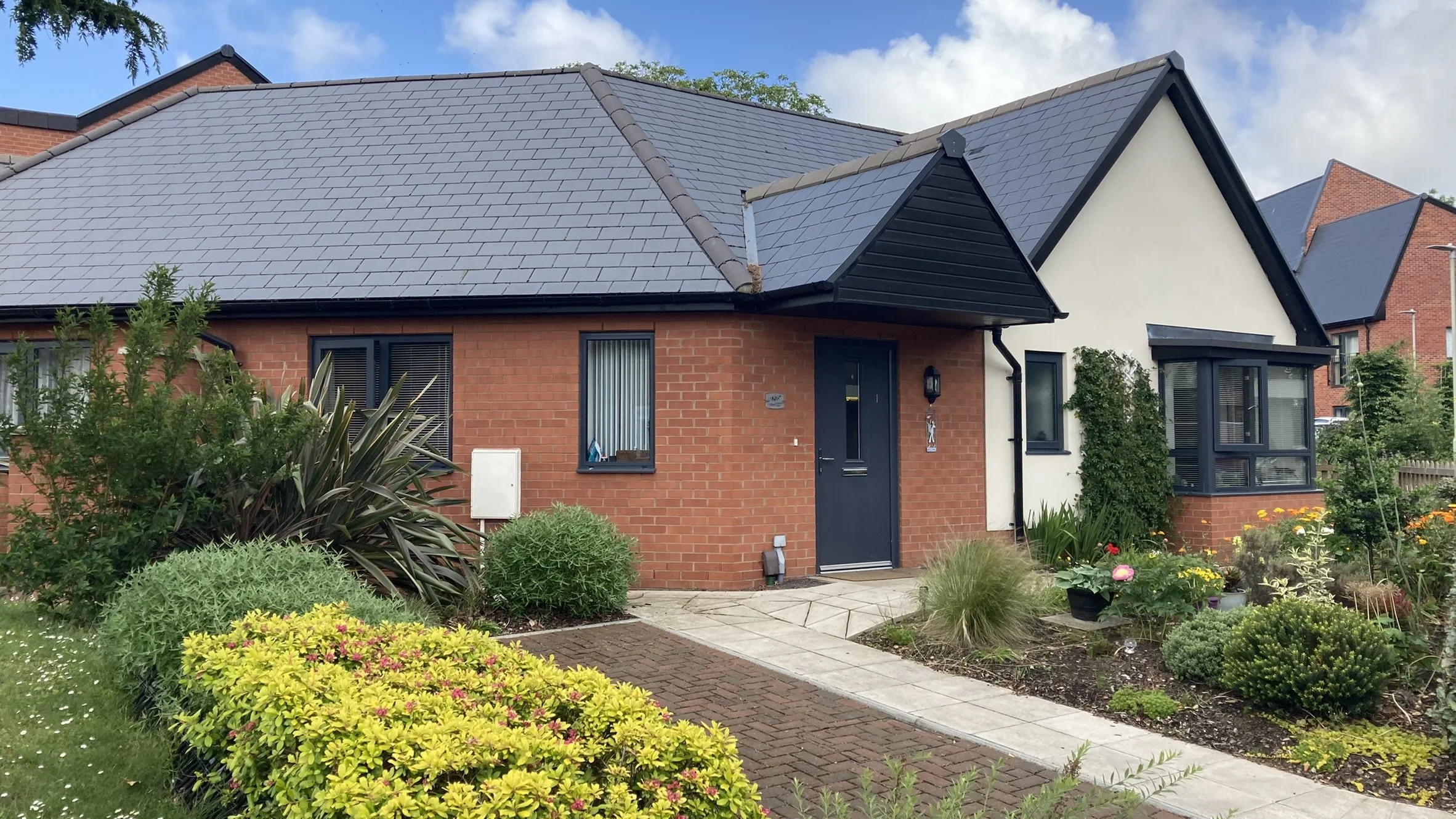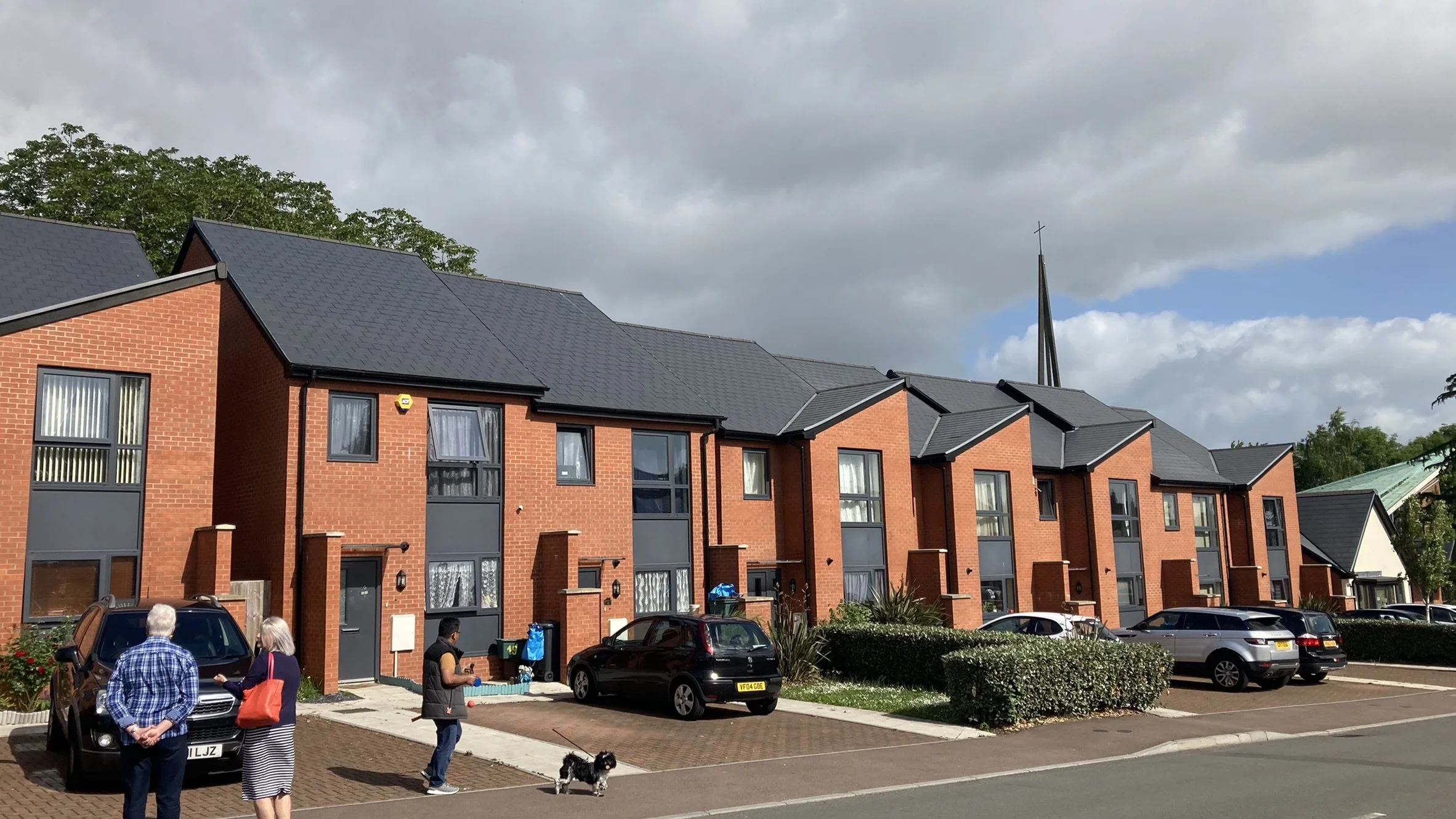St Aldate’s, Gloucester
The Story in brief
St Aldate’s is a Grade II listed church built in the 1960s; alongside it was a wooden church hall and large vicarage - neither of which were fit for purpose any more. What would the diocese do?
A summary is below; read the full version here >
-
Starting point
St Aldate’s Church, a Grade II listed 1960s building, stood alongside a wooden church hall and a large detached vicarage. The vicarage was no longer needed, and the church hall was in poor condition.
-
The plan
The Diocese was keen to provide affordable housing, and to remodel churches for improved community use. Rooftop Housing Group had previously collaborated with them on similar projects.
Discussions began in 2011, with plans to demolish the vicarage and church hall and build over 30 affordable homes. The goal was to use the proceeds from the land sale to refurbish St Aldate’s Church for community use.
-
The journey
Local opposition emerged, particularly concerning the church hall demolition and tree removals, as the site had a blanket Tree Preservation Order.
To address these concerns, Rooftop hired a Heritage Consultant, which led to the church’s listing being upgraded to Grade II* in 2013, with the church hall and vicarage excluded from the listing. A critique from the South West Design Review Panel helped refine the plans, ensuring the new homes faced the main road and a new access road was incorporated.
Despite local opposition, a planning application for 25 homes was submitted in 2014. However, a local group, the White City Action Group (WCAG), registered the church hall as an Asset of Community Value, delaying the project. WCAG initially planned to refurbish the hall but eventually agreed that building a new community facility would be a better option.
In 2017, planning permission for 23 affordable homes was granted, and construction began shortly after. The project was completed in 2018.
-
Resources
- The development attracted £480,000 of grant from Homes England’s predecessor, HCA
- The land receipt was donated by the Diocese to WCAG
- Total scheme cost came to over £3 million
-
Keys to success and biggest challenges
- Rooftop’s commitment to delivering affordable homes despite challenges
- Effective collaboration between Rooftop, the Diocese, WCAG, and Gloucester City Council
- Support from the South West Design Review Panel and appointment of specialists to address heritage and conservation concerns
Challenges
- The Asset of Community Value listing delayed the project by over two years
- Access issues arose from consecrated land ownership
- The Tree Preservation Order reduced developable land, requiring an Arboricultural Survey
-
Final outcomes
- 23 new affordable homes, including 20 for rent and 3 for shared ownership
- Investment in a new community facility nearby.
Interested in more detail? Read the full story here.
-
Photo credits Jonathan Tame and Philip Halling
The text is adapted from a case study by Housing Justice (https://housingjustice.org.uk/wp-content/uploads/2020/02/St-Aldates-Church-website-summary.pdf).

Flats built on the site of the vicarage

New flats

One of the new bungalows built

Bungalow, flats and existing church building

Two- and three-bed houses built in the vicarage garden

The church and wooden church hall prior to redevelopment (image credit: Philip H)

